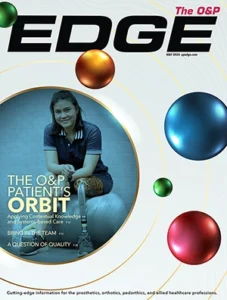Dear fellow listservers:
Thank you all for your responses to my questions. Following this overview are the responses to the questions I posted regarding foot orthosis treatment and billing for neuropathic and diabetic foot patients. The theme to many of these responses is that the A-codes, not the L-codes should be used when providing custom foot orthoses for diabetic patients and that a customized, not prefabricated orthosis should be utilized (due to the compromising nature of neuropathy and skin pressure tolerance particularly when protective sensation is absent). Most responses for customized orthoses involve a multidurometer device made of various soft accommodative foams as a top layer and more dense materials as a base layer. Several respondents suggest the use of extra depth shoes in addition to a custom foot orthosis. In addition, some respondents stressed the importance of differentiating whether a neuropathic lesion was present of not and if one was present that possibly more than jus!
t a foot orthosis (i.e. AFO) would be indicated for off-loading the lesion. Some respondents suggested that non-customized treatments involve Otto Bock prefab foot orthosis and depth shoes such as Apex Ambulators. Also, I provided an additional bit of information from another related question posted by a colleague. The two posts are listed at the end of this document.
First, the orignal questions were as follows:
> I have questions for the group on the use of foot orthoses for persons with neuropathy, particularly of diabetic origin:
> 1.) Is there a non-customized type of foot orthosis made of an accommodative yet relatively durable material available for these persons.
> 2.) Also, what HCFA L-codes are being used for this?
> Chris Hovorka, MS, CPO
> University of Texas Southwestern
> Medical Center at Dallas
> Prosthetics-Orthotics Program
__________________________________
Apex makes the “ambulator” shoe design. These shoes can include the optional diabetic insert. It has a top layer of plastazote and also has
a gel layer. My patients tell me it is very comfortable.
I don’t remember the codes, but they are not “L” codes, they are “A” codes. I don’t have the specific code here.
email me back with a phone # if you need the code.
__________________________________
At our Diabetes foot Clinics the non-custom foot bed of choice is 1/4 ” P1 plastazote over 1/4″ PPT.




